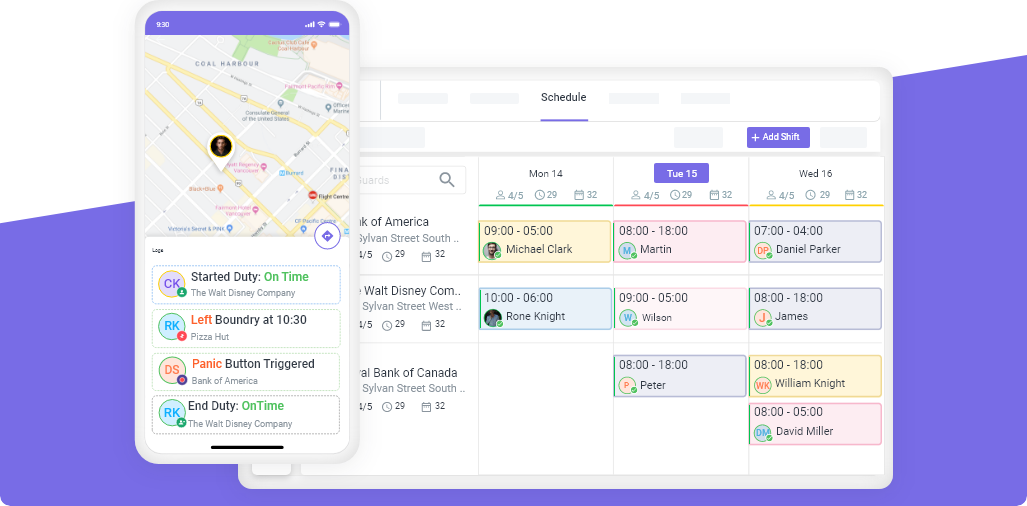Important Performance Review Tips for Managers
Tue, Apr 1, 2025
Read in 7 minutes
Performance management for managers is a task that cannot be avoided. If not done properly, they can become a headache. These performance review tips for managers can help them get good results.

As a manager, performance reviews are important for helping employees grow, improving team performance, and making sure everyone is working toward the same goals. When done well, performance reviews can increase employee satisfaction and productivity. However, a poorly conducted review can lead to confusion, frustration, and even lower morale. In this guide, we will explain why performance reviews matter. Not only that, but we will also share some performance review tips for managers so that your next meeting is stress-free!
Why Good Performance Reviews Matter
Performance reviews are a great way for managers and employees to talk about achievements, challenges, and areas to improve. They allow managers to give feedback, set goals, and help employees understand their roles in the company’s success.
When done right, performance reviews build trust and transparency within teams. They help employees feel valued and motivated, which can increase productivity and reduce turnover. On the other hand, poorly conducted reviews can leave employees feeling confused and unappreciated.
A good performance review can lead to positive changes for both employees and the organization. Let’s look at some performance review tips for managers on how to conduct effective reviews.
Tip 1: Prepare for the Review in Advance
Preparation is the key to a successful performance review. Don’t wait until the last minute to gather your thoughts or look at an employee’s work. Take the time to review their performance, goals, and feedback from the past period. Once you get a hang of it, you will not wonder how to do performance reviews.
Make sure to:
- Look at the goals set during the last review, if any, and see if they were met or not.
- Review their work to identify strengths and areas for improvement.
- Consider any challenges they might have faced.
Preparing for the review helps you have a fair, informed, and productive conversation with the employee.
Tip 2: Set Clear and Measurable Goals
Clear goals give employees direction and help them stay focused on what they need to improve. Make sure that the goals you set are SMART (Specific, Measurable, Achievable, Relevant, and Time-bound). These goals help both you and the employee understand what is expected and provide a way to track progress.
For example, if an employee’s goal is to improve their sales numbers, set a specific target (e.g., increasing sales by 15% in the next quarter) and define the steps they need to take to achieve it.
Setting clear goals helps employees understand what they need to do and how to reach their targets.
Tip 3: Provide Constructive Feedback
Feedback is the most important part of any performance review. However, the feedback needs to be helpful. Focus on how employees can improve rather than just pointing out what they did wrong. Your feedback must always be actionable that employees can work on.
When giving feedback, use the “SBI” model:
- Situation: Describe the situation where the behavior occurred.
- Behavior: Explain the specific behavior.
- Impact: Share the effect that the behavior had on the team or company.
By being clear and specific, you help employees understand what they need to work on without making them feel defensive or upset. And that is the only correct way on how to conduct a performance review. The main goal must be to get the point across and not make your employee upset.
Tip 4: Foster Open Communication During the Review
A performance review should be a conversation, not just an evaluation. Encourage employees to share their thoughts, feedback, and concerns. Listening to your employees’ point of view makes them feel valued and helps you understand any challenges they are facing.
Some good questions to ask include:
- “What do you think went well this year?”
- “What support do you need to reach your goals?”
- “Are there any obstacles that have made your work more difficult?”
Open communication will help you build trust with your team and create a more positive review experience. And an employee performance review should be beneficial for both employees and the company. Always have an open dialogue that is less formal and intimidating for the employees. This will help build a relation of trust and understanding. And always listen to what employees have to say too. This way they will feel valued and included in the whole process.
Tip 5: Address Employee Development and Growth
A performance review is not just about evaluating past performance—it’s also about looking ahead. Talk to employees about their career goals and how you can support their growth. Discuss skills they want to develop or responsibilities they want to take on.
You might discuss:
- Training opportunities
- Mentorship or coaching programs
- Ways to take on new challenges
Helping employees develop their skills makes them feel supported and encourages them to stay with the company long-term. Once the employees see that they have proper areas for personal growth, they will be encouraged to work harder.
Tip 6: Use Technology to Streamline the Process
In today’s digital world, performance reviews don’t have to be complicated. There are many tools available to help manage the review process more efficiently. Using software can help you organize feedback, track employee progress, and create reports.
Benefits of using performance management software:
- Collect feedback from multiple sources (e.g., coworkers, managers).
- Track progress over time.
- Reduce bias and errors in the review process.
Using technology saves time and helps keep the review process consistent and accurate.
Tip 7: Follow Up and Ensure Continuous Improvement
Performance reviews should not be a one-time event. After the review, make sure to follow up with employees regularly to check on their progress. Schedule check-ins to discuss how they are doing with the goals set during the review and provide additional feedback.
Benefits of follow-up:
- Keep employees on track toward their goals.
- Adjust goals if circumstances change.
- Offer support when needed.
By regularly checking in with employees, you show that you care about their growth and are committed to helping them succeed.
Tip 8: Train Managers on Active Listening
One of the most important skills during performance reviews is active listening. As a manager, it’s essential to fully engage with your employee during the review process. Active listening helps you understand their concerns and allows you to provide more thoughtful feedback.
Here are some ways to train managers on active listening:
- Make Eye Contact: This shows the employee that you are paying attention.
- Ask Clarifying Questions: If you don’t understand something, ask questions to get more details.
- Avoid Interrupting: Let the employee speak fully before responding.
- Summarize What They Say: Repeat back what they’ve said to ensure you understand their perspective.
By practicing active listening, managers can buil
How to Conduct Successful Performance Reviews as a Manager
Here are some key steps you can follow to ensure a successful performance review:
- Prepare in advance: Review employee performance, goals, and challenges before the meeting. If you manage to do that only then you can measure if are performance reviews effective.
- Set clear and measurable goals: Help employees understand what is expected of them and how to track their progress.
- Provide constructive feedback: Offer feedback that helps employees grow and improve.
- Encourage open communication: Listen to employees and allow them to share their thoughts and concerns.
- Support employee development: Discuss opportunities for growth and ways to help employees achieve their career goals.
- Use technology: Use performance management tools to streamline the review process and track progress.
- Document Everything - After the review make sure to document what was discussed. The plan of action and what will be the goals in the coming future.
- Follow up regularly: Schedule follow-up meetings to track progress and offer additional support.
Conclusion
By following these steps, you will be able to conduct performance reviews that motivate employees, improve performance, and create a more positive work environment. Performance reviews are an opportunity to strengthen relationships, help employees grow, and align team goals with company objectives. Once you start using such best practices for performance reviews, you will see the difference.
Get a Free Trial
Sign up For Newsletter
Latest Blog Posts
Get Started
Start being productive & grow your business
with Novagems





